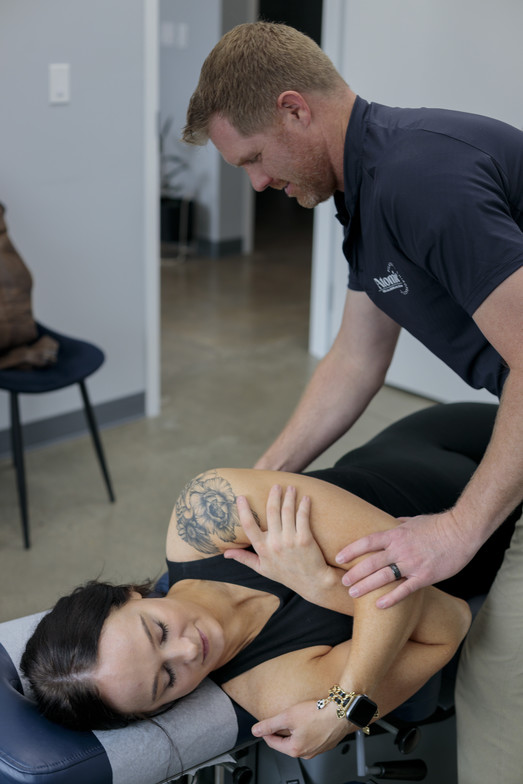
Is Chiropractic Care Safe?
Chiropractic care has gained a solid reputation for helping people manage musculoskeletal pain (Pain that affects your bones, muscles, ligaments, tendons, and joints). But let’s be honest—some folks still have concerns about safety. If you've ever wondered whether chiropractic adjustments are risky, let's clear the air and dive into the facts.
The Safety Profile: Generally Safe, With Some Considerations
When performed by a licensed and properly trained chiropractor, spinal adjustments are generally safe. That being said, like any medical intervention, there are potential risks. Here’s what you should know:
Common (and Mild) Side Effects:
-
Temporary soreness or stiffness (like after a good workout!)
-
Occasional headaches or fatigue, usually short-lived
Rare but Serious Risks:
-
Vertebral artery dissection (VAD): A rare arterial tear sometimes linked to strokes.
-
Cauda equina syndrome: Severe nerve compression in the lower spine, requiring urgent medical attention.
-
Rib fractures: These are more common in individuals with osteoporosis or fragile bones.
*Here’s a key point: The overall risk of stroke from chiropractic care is very low. In fact, research shows that people seeking care for neck pain—whether they visit a chiropractor or a primary care doctor—have a similar stroke risk. This suggests that the underlying condition, rather than the treatment itself, may be a contributing factor in these rare incidents.
What the Research Says
Studies consistently show that serious adverse events from chiropractic care are rare. Research also supports chiropractic treatment as an effective approach for low back pain, neck pain, and headaches.
A notable study published in the National Library of Medicine looked at Medicare patients and found no statistical difference in stroke risk between those seeing a chiropractor and those seeing a primary care physician for neck pain. In other words, chiropractic adjustments don’t inherently increase stroke risk.
Understanding Stroke Risk
The concern about stroke following cervical adjustments has been a hot topic for years. Here’s the reality:
-
Strokes have been reported after neck manipulations, but they are extremely rare.
-
The risk is associated with cervical manipulation in general—not just chiropractors. Some osteopathic physicians and physical therapists also perform these techniques.
-
It’s often difficult to determine if an adjustment caused a stroke or if someone was already experiencing a stroke and sought care for neck pain.
The key takeaway? It’s essential to recognize the signs of a stroke and seek immediate medical attention if needed. Remember the FAST acronym:
-
Face: Drooping?
-
Arms: Weakness or numbness?
-
Speech: Slurring or difficulty speaking?
-
Time: Call 911 immediately!
Other warning signs include a severe headache, dizziness, vision changes, or difficulty speaking. If you experience any of these symptoms, get medical help immediately.
How to Choose the Right Chiropractor
Want to ensure you get the best (and safest) care? Here’s what to look for:
-
Licensing: Always verify credentials.
-
Education: Make sure they hold a Doctor of Chiropractic (D.C.) degree.
-
Experience: Years of practice and specialized expertise matter.
-
Referrals: Ask around—word of mouth is powerful!
-
Communication: A good chiropractor listens, explains, and collaborates with other healthcare professionals.
-
Thorough Assessments: A great chiropractor won’t just jump into adjustments—they’ll conduct a full evaluation/exam first.
When to See a Medical Doctor First
While chiropractic care can work wonders, there are times when you should seek medical attention first:
-
Severe pain, numbness, tingling, or weakness (especially if sudden or unexplained).
-
Conditions like fractures, infections, or tumors - these require medical management.
-
A history of circulatory problems - it is important to discuss this with both your doctor and chiropractor.
-
A headache combined with tingling in your arm - could signal a vascular issue.
The Bottom Line
Chiropractic care is a safe and effective way to manage musculoskeletal pain—when performed by a qualified professional. By understanding the risks, making informed choices, and maintaining open communication with all of your healthcare providers, you can confidently decide if chiropractic care is right for you.
Do you have questions or concerns? Always feel free to reach out with questions. The best healthcare decisions are made when you’re fully informed!

Ryan Griffeth
Contact Me


.png)
